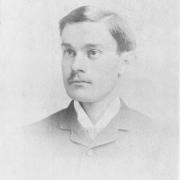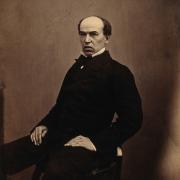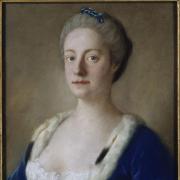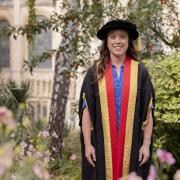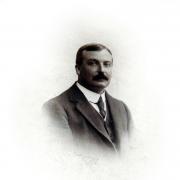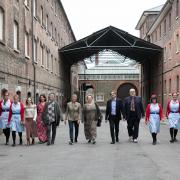With Halloween taking place this month, we look at why the allure of witchcraft is as strong as ever and just how times and attitudes have changed
Halloween special: the Witches of Kent
With Halloween taking place this month, we look at why the allure of witchcraft is as strong as ever and just how times and attitudes have changed
Witches have long captured the public’s imagination. At St Werburgh Parish Church in Hoo last year, 200 mourners gathered at the reburial of the body of a 14th-century teenager recently discovered nearby during an archaeological dig.
It was rumoured that because the young girl was beheaded and buried on unconsecrated ground that it meant she had been a witch.
That’s 200 mourners - for a complete stranger. I doubt I’d get that many at my funeral (which of course won’t take place for at least another hundred years). But then that’s the allure of witches for you: there is something about them that seems to grab our attention.
“I’ve certainly found that the vast majority of people that I talk to are really interested in what it’s like to be a witch. It’s just something that seems to spark their interest. I don’t know why this is the case, but it seems that witches and witchcraft remains something that people find fascinating,” says practicing witch Annabella Twort of the Friends of the Moon Pagan group in Tunbridge Wells.
But although our interest today is quite innocent, in the past the relationship between the people of Kent and the county’s witches was not always so amicable.
Our county has the dubious accolade of being home to Theodore of Tarsus (Archbishop of Canterbury 669-690), the first person to introduce legislation against witchcraft in this county. But despite this illegality, until the late Middle-Ages prosecutions against witches in England were actually quite rare.
Things changed during the late 1400s when civic and ecclesiastical attitudes towards witchcraft hardened. For the next 300 years Europe was engulfed by periodic waves of hysteria directed towards witches; hysteria usually prompted by other factors, such as poor harvests, plagues or war.
During this period witch-hunters were aided by the publication in 1487 of The Malleus Maleficarum (The Hammer of Witches), which contained everything you ever wanted to know about witches but were afraid to ask; including handy tips on how they could be found and convicted.
For the first time this book also shifted attention towards women, describing in detail how they had a greater inclination towards witchcraft, claiming they were much more susceptible to demonic temptations through their manifold weaknesses.
However ludicrous that might sound today, it had a profound effect. In Kent more than 20 executions took place from 1500-1700, the overwhelming majority of which involved women.
Like everywhere else in Europe witch-hunts ebbed and flowed in the county. One period of sustained hysteria occurred during the 1640s when the atmosphere of unrest created by the Civil War fuelled a witch-craze across England.
Here, one of the county’s most famous witch trials took place in 1645. In Faversham three women, Joan Williford, Joan Cariden and Jane Hott, were found guilty of performing witch-craft and hanged for their crimes.
The recorded confessions of Joan Willford and Joan Cariden describe how the Devil appeared to them in the form of a black dog and persuaded them to give their soul to him in return for both money and revenge against their enemies.
These confessions, and others from the time, are often thrown into doubt because of the probable use of torture to extract them. Although many of the more brutal techniques used in Continental Europe were banned in England, some unpleasant methods were still employed including; bread-and-water diets, the tethering of limbs and sleep deprivation.
Another method to ascertain guilt, and one that Jane Hott failed, was trial by ordeal. The most common way of doing this was Dunking. The suspected witch would be tied to a ducking stool, which would then be lowered into a river or lake to see if they would float. If so, then the accused was in league with the Devil and thus a witch. But if the suspect drowned or died of hypothermia, they had obviously not been under Satan's protective watch, and so were innocent, which of course was of little comfort because they were also dead.
Ducking stools are still evident in Kent today. One can be seen in the centre of Canterbury where the River Stour runs alongside The Old Weavers Restaurant and another is still housed inside Fordwich Town Hall.
Ultimately, as the Enlightenment took hold the witch-craze petered out and in 1735 The Witchcraft Act was introduced, stating that practising witches should in future be punished as vagrants or con artists, subject to fines and imprisonment and not execution. This more lenient act stayed on the statute books until repealed in 1951, when it finally became legal to be a witch again in England.
“And that’s really the point where modern witchcraft begins” says practising local witch Graham Miller of Minster. “Gerald Gardner, the father of Wicca (which is what we call witchcraft today) popularised the religion during the 1950s and from that point it has spread and grown.
“A lot of what Gardner promoted through his books, and what has subsequently become British Traditional Wicca, was influenced by Spiritualism, folklore, ceremonial magic and the work of the occultist Aleister Crowley.
“There are in theory some links with pre-Christian witch cults but belief in that varies from person to person. In fact there is plenty of personal and group interpretation within Wicca.”
Although Wicca views on theology are numerous and varied, the vast majority of Wiccans venerate both a god and a goddess. “Traditionally, the god is viewed as a horned god, associated with nature, wilderness, sexuality and the life cycle. By contrast the goddess is usually portrayed as a triple goddess, comprising of a maiden goddess, a mother goddess and a crone goddess, each of whom has different associations, namely virginity, fertility and wisdom,” explains Annabella Twort.
But I know what you really want to find out: what exactly do witches do?
“Wicca has nothing to do with the witches that you might see in films” says practising Maidstone witch Anne Atkins. “Yes, some of us do get together in covens but really a coven is more of a community of like-minded people. It’s like a family but one of your own choosing.
“And when it comes to spells, it’s much the same as prayer, but instead of just ‘hoping’ we do this actively through the use of charged magical items, such as talismans, amulets or candles.
“Let's say we want to cast a spell for health. We would invoke the goddess and then take a bowl of water and some sweet-smelling herbs and ‘charge’ this water with concentrated energy being raised toward this goal.
“The water would be then used with soke cotton or a wash cloth, to wash the face, hands or any other specific part of the body daily, as part of a meditation. Together with that, the person in question would also strive to live a healthier life, too.”
Contrary to portrayals on film and television, there is also no such thing as white or black witches, a concept that seems to be entirely fictitious.
“There are just witches,” says Annabella. “You get different types of witch such as solo witches who practice alone, but there are no cackling evil crones.
“When casting spells we are governed by two concepts. One of these is ‘if it harm none, do what ye will’, which means we have the freedom to act but to do so responsibly.
“And the other concept is the law of threefold return which holds that whatever benevolent or malevolent actions a person performs will return to that person with triple force, so it’s a bit like karma.”
Witchcraft has come a long way. Along with other pagan faiths they together constitute the fastest-growing religious group in the county. And despite the way that witches are portrayed, specifically at this time of year, they are more likely to offer you advice and a herbal tea than turn you into a frog.
SEASONAL FESTIVALS
Wiccans celebrate a number of seasonal festivals of the year, known as Sabbats. Collectively, these occasions are often termed the Wheel of the Year. Many Wiccans only celebrate four of these while others mark all eight. The four Sabbats common to all these groups are sometimes referred to as Greater Sabbats.
Greater Sabbats
Samhain, (Halloween) 31 October
Imbolc, (Candlemas) 1 February
Lughnasadh (Lammas) 1 August
Other Sabbats
Yuletide 21 December
Ostara 21 March
Litha 21 June
HALLOWEEN (SAMHAIN)
31 October is considered by most Wiccans to be the most important of the four Greater Sabbats. Many see it as a time to celebrate the lives of those who have passed on, and it often involves paying respect to ancestors, family members, elders of the faith, friends and other loved ones who have died. In some rituals the spirits of the departed are invited, but not conjured, to attend the festivities.





